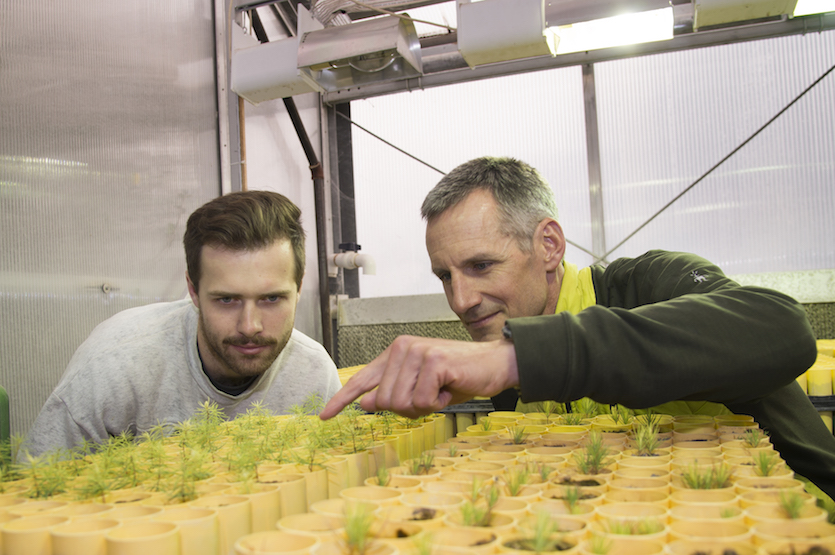ISU Professor Keith Reinhardt contributes, co-authors paper on what kills trees during drought that appeared in journal Nature Ecology and Evolution
September 27, 2017

POCATELLO – Idaho State University Assistant Professor of Biological Sciences Keith Reinhardt contributed to and co-authored a paper published in the journal Nature Ecology, and Evolution about what kills tree during drought that received wide spread attention in scientific outlets.
The paper, “A multi-species synthesis of physiological mechanisms in drought-induced tree mortality,” was produced by 62 scientists, led by Henry Adams at Oklahoma State University, who organized the analysis of many individual studies.
Science Daily, Phys.Org and the National Science Foundation where among organizations that commented on the study’s findings.
“The reason the paper got into Nature was because it was the first time that in one study there was an analysis of many observational and experimental studies completed on multiple continents on a large variety of trees,” Reinhardt said.
Reinhardt was contacted to contribute on this article because of an earlier study he’d done at ISU on the physiological functioning of plants that was published in the journal Tree Physiology.
“Everyone knows that if you don’t water trees and plants during drought for long enough they die,” Reinhardt said. “The question we were addressing was ‘do they die because they stop photosynthesizing and use up their internal sugar (carbon) reserves, or do they die because of the plants’ inability to move water around to transport nutrients and to keep their cells well-watered?’”
In his own study, as well as in the larger study, researchers determined that the latter cause, the plants’ hydraulic dysfunction, occurred in almost all the trees studied, while a significant decline in internal carbon and sugar reserves only occurred about 50 percent of the time.
“While carbon relations did seem to be affected by drought, there was no universal signal that we could find,” Reinhardt said. “For water, however, we always observed a decline in hydraulic conductivity, with a 60 percent in conductivity being the magic number of mortality. Mortality was almost universal in all tree species once this threshold was crossed.”
These findings have large implications because understanding drought is crucial to managing forests and could become even more so as climate change occurs.
"This research will help us more accurately predict how trees will respond to environmental stresses, whether drought, insect damage or disease," said Lina Patino, a section head in the National Science Foundation's Division of Earth Sciences, which co-funded the study through its Critical Zone Observatories program.
Patino’s colleague, Liz Blood, director of NSF's MacroSystems Biology program, which co-funded the research, said "Droughts are simultaneously happening over large regions of the globe, affecting forests with very different trees. The discovery of how droughts cause mortality in trees, regardless of the type of tree, allows us to make better regional-scale predictions of droughts' effects on forests."
Reinhardt said he was pleased and honored to be included in this study.
“I think that this speaks to many strong collaboration I have developed while at ISU,” said Reinhardt who is in his sixth year as an assistant professor at ISU and was a post-doctoral researcher at ISU for three years prior to that.
Reinhardt’s own study that was published in Tree Physiology was completed at his laboratory in the ISU Biological Sciences Building and the ISU Greenhouse. He studied Limber Pines that grow at high elevations in the Western United States.
“Forests are one of the earth’s major carbon sinks, and help to store much of the human-related carbon released into the atmosphere, so forests are important for carbon storage,” Reinhardt said. “Similarly, forests are important components of earth’s water and energy budgets, water quality, habitat for animals, recreation and economics, so it is important for us to understand drought-caused forest mortality.”
He noted that a relatively new phenomenon that people are observing is widespread tree mortality that has been observed in forests on all forest continents, and in both dry and wet environments. For example, in North America, widespread tree mortality associated with drought, which is not linked with pathogens or insect pests, has been reported in New Mexico, Arizona, Colorado, California and Canada.
Categories:
